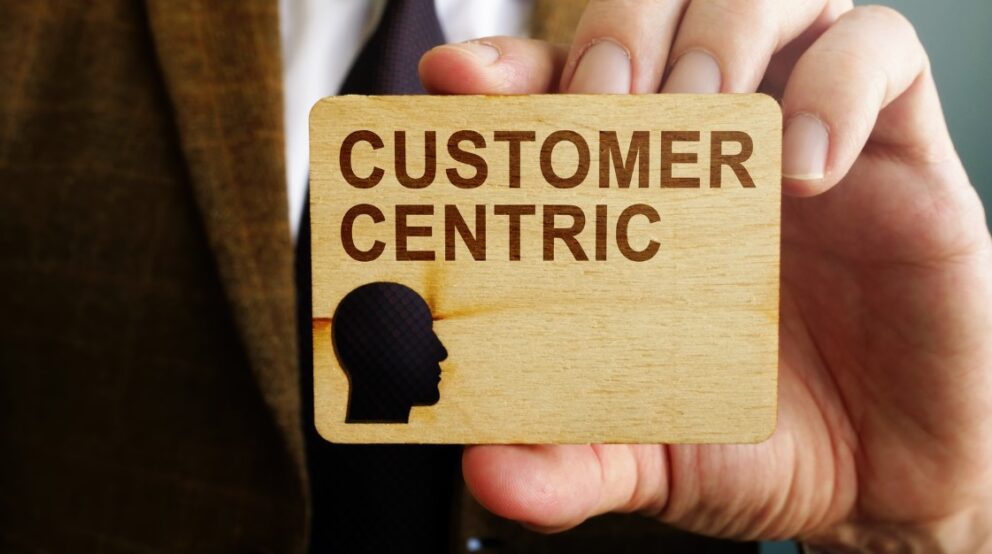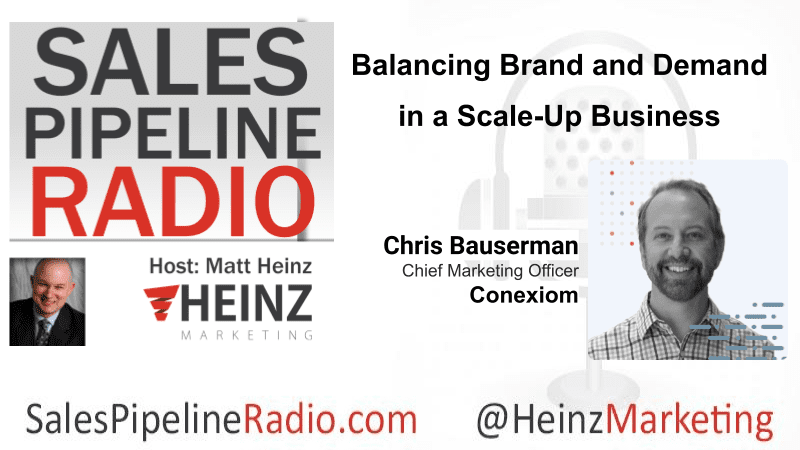What Decision Research Tells Us About How Buyers Analyze Choices
In this episode, we will examine decision-making research as it is explored in 3 papers:
- Bounded Rationality: The Adaptive Toolbox (Gigerenzer, 2001)
- Deep Rationality: The Evolutionary Economics of Decision Making (Kenrick et. Al., 2009)
- Prospect Theory: An Analysis of Decisions Under Risk (Kahneman & Tversky, 1979)
We only scratch the surface of what is in these, so please dig into the articles above!
Transcript:
Slide 1 – Businesses need to make decisions, and they rely on people to do it. We might have all the data in the world, but decision making follows many of the same concepts today that it has for centuries. So let’s dive in to what decision research can tell us about how buyers analyze choices.
Slide 2 – Before we get too far into it, these are the 3 articles I referenced for this video. I will link them in the description but you can easily search them on scholar.google.com. They are all free and available. We are only going to scratch the surface of what is in them, so if this interests you, check them out.
Slide 3 – This is Scott Galloway, professor at NYU Stern. In one of his No Mercy No Malice newsletters he said: “Rookie marketers make the mistake of thinking choice is a good thing. Choice is a tax on your time and attention. Consumers don’t want more choice, but more confidence in the choices presented.” This is true in B2B as well. How many times have you been overwhelmed by too many choices when what you really want is to know you are making the right one?
Slide 4 – So what gives people confidence in choices? There are a lot of models of decision making. But we are going to look at 3, today, that have been heavily researched. One quick note before we go forward: the studies that I reviewed for this are mostly to do with decision making as an evolutionary tactic. Meaning, the primary goal of subjects making decisions is to reproduce and proliferate, success in which indicates evolutionary fitness. At an organizational level, you could make the argument that this is the case as well, maybe not reproduction, but certainly market proliferation and growth. Ahh, biology provides a great window into business. But let’s get into it.
Slide 5 – First up we have “true rationality” and we are only going to spend a little bit of time on this because it doesn’t really happen. However, for the sake of conversation, true rationality, or unbounded rationality, assumes that humans will consider all alternatives when making a decision and select the best option.
Slide 6 – Of course, the problem with this is that nobody is that galaxy-brained. True rationality is beyond the scope of most human’s computational capacity. When you are learning econ early, you hear the assumption that decision makers are rational and will make rational decisions. This is true to a point, but nobody can evaluate every option, and doing so would eventually produce diminishing returns. True rationality is a myth, helpful for strawman arguments, but not really applicable to the real world. Nobody has that kind of computational power just sitting in their skulls.
Slide 7 – Next we come to bounded rationality, which we will explore more in a moment. For now, suffice to say that it is a more human look at what rationality means. That is, it takes into account the boundaries that a human being typically has.
Slide 8 – Finally, we have deep rationality, which is the idea that our concept of what rationality means is rooted in our evolutionary history. It suggests that human decision making is geared to solve problems that have come up again and again throughout our existence, and then applying that same logic to different domains.
Slide 9 – For example, it is very common to be afraid of spiders and snakes, but not of cars, despite the fact that cars are far more worthy of paralyzing fear than spiders and snakes combined times ten. We are pretty confident, as a species, that spiders and snakes are icky, but that cars are cool.
Researchers suggest that in ancient times, a bite from a spider or a snake may well have proved fatal, so those that had the fear were more likely to procreate. Cars have existed for around a century, not even close to long enough to make evolutionary impact. Maybe another few millennia of careless driving will engrain a stronger fear of high speed, metal death machines in us, but who knows?
Slide 10 – This is the framework behind The Adaptive Toolbox. You might recognize that name from earlier. It is the focus of one of the articles.
The concept is pretty simple, it defines bounded rationality, which we discussed a moment ago, as requiring both satisficing and the use of fast and frugal heuristics. The idea, here, being that decision makers act on past experiences and biases, and they are also likely to take a “good enough” approach than to consider every option. Humans, even teams of humans, just don’t have the computational capacity, let alone time, to consider every option at equal weight.
Even if they did, it would take so long that the returns on the decision would begin to erode due to lost time. At some point, you have to plug your nose and jump.
Slide 11 – Let’s take a second to talk about “optimization under constraint”. Optimization is an attempt to reach the maximum value of a function, be it a buying decision, email campaign, or technology budget. You want the maximum benefit for the minimum cost.
However, effective optimization is enormously expensive for our brains. We can optimize things when we have clear data and an understanding of impacts (or assumed understanding, anyway), but when things get obscure, the computational cost of optimization grows exponentially.
Slide 12 – The problem is two-fold. First, your typical B2B buyer has a lot of unknowns, making optimization expensive. There are unforeseeable impacts, competing goals, unclear cues, and a mind-boggling number of alternatives. There just is too much going on for marketers to assume B2B buyers are making decisions using optimization strategies.
Slide 13 – The second is that we assume an optimal stopping point can be calculated, when in reality, optimization under constraints often results in analysis paralysis. Knowing when the cost of stopping the search outweighs the value of continuing can be even more computationally expensive than the decision itself, so people stall.
The result? Optimization often is not a viable strategy for decision making. Companies publish huge amounts of content to help buyers optimize decisions, and while blasting information onto the web is great for building awareness, it isn’t always as effective in building confidence in a decision and thus doesn’t close deals.
Slide 14 – Yet great decisions get made every day. Going back to the adaptive toolbox, solutions have to be good enough (that’s sufficing), and buyers are most likely to make decisions based on heuristic reasoning. So let’s dive into how that works.
Slide 15 – There are 3 concepts for bounded rationality that we need to know. They are pretty simple. Each concept is super important for marketers to know.
Slide 16 – The decision process in mind has to be a plausible way of thinking for a species to carry out. This is important because we kinda know how people think, but if we were studying the decision-making of ants, it might be more challenging. If you think of a company as a living, breathing organism, this make sense for marketers. We need to know how companies and teams think to know if our understanding of how they make decisions is a plausible one.
Slide 17 – The second suggests that heuristics apply largely to discrete domains in which decisions are made, and don’t always transfer from one to the other. There are plenty of counterpoints here, but for business we can assume some truth; heuristics that work in marketing are unlikely to be effective in finance.
Slide 18 – Finally, ecological rationality is the concept that the degrees of success domain-specific heuristics enjoy is more a factor of how well adapted they are to the ecosystem in which they are made than any optimization strategy or even consistency. If it doesn’t work for the market, it is not ecologically rational.
Now that we have talked through these 3, here are how they apply.
Slide 19 – Firstly, risk. Understanding how buyers think about risk is crucial to messaging. We often consider objections and how to get around them, but these objections are clear signals for how buyers are thinking about risk. Prospect Theory, one of the articles mentioned before, expands upon how people tend to place a higher weight on a potential loss than a potential gain of a similar magnitude, despite the net result being the same on average. The heuristic here is that the pain of loss in business is often greater than the joys of success.
Slide 20 – When you are dealing with objections, where is the loss that buyers are considering? It all comes down to profitability, but by what avenue? Time? Skill? People? Budget? Reputation? Whatever the case, messaging too hard to the upsides without mitigating the downsides is going to fail. To really create confidence for your buyers, you need to consider the ecology they live in, and know what rational risk mitigation looks like for them.
Some domains are more tolerant of risks, or attract people with higher risk tolerance. You need to know this about your buyers as well.
Slide 21 – We have talked about diminishing returns from an optimization perspective, but what about the marginal value of a message? How much value does the 20th piece of content with the same message bring when decisions are based largely on heuristic reasoning and trusted peers?
Calling back to Professor Galloway’s quote, more choices are not the right answer and often times, neither is more content. Buyer’s want confidence that their decision will help their firm, and product/problem information isn’t always going to do it, especially when they have already consumed so much.
Good customer research will identify where confidence came from in your best accounts.
Slide 22 – Do you think most people choose a higher reward in the future, or a lower one immediately? Well, surprise! It’s complicated. The concept is called temporal vs. profitability discounting. Which do you discount, reward or time?
Companies and individuals think differently about this, and there are all kinds of factors that impact how a company might respond to that question including growth stage, time of year, market disruption, investment rounds, all kinds of stuff. Knowing the big 3 for your buyres is huge part here. What domain specific heuristics are at play? What is the market ecosystem like? Is your understanding of how they think plausible?
The concept of temporal discounting and how it applies to your product is key to picking the right message.
Slide 23 – Indifference curves show how people weigh the value of two separate “goods” (or outcomes) against budget constraints. The deep rationality perspective suggests that the weight of that value is highly dependent on social environments, or in the case of companies, market environments, in other words, on the ecological rationality of the decision. A good example is that if you are in a market whose buyers prefer sustainable solutions, sustainable initiatives get weighted higher for investment. Pretty straightforward stuff, but it requires that you understand, again, how the big 3 apply to your buyers. Know them well.
Slide 24 – At the end of the day, and this video, these three are the biggest take-away. You need to understand these 3 things about your buyers and their companies in order to get a grip on how they make decisions.
How do the company, buying committee, and personas think? What is psychologically plausible for them?
Within their domain, what heuristics exist. How do they think about risk? What about budget? And where do these heuristics come from? Peers? Journals? Thought leaders?
What is the ecosystem in which they exist (aka the market), and what is rational in that space?
Slide 25 – I love to talk about applied psych in marketing, so feel free to reach out. My email is on the slide. Thanks for watching!






